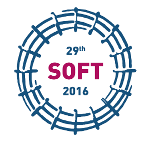Jean-Michel Bernard
(CEA/DRF/IRFM)
9/6/16, 11:00 AM
B. Plasma Heating and Current Drive
Oral
One of key missions of WEST (Tungsten (W) Environment in Steady-state Tokamak) is to pave the way towards the ITER actively cooled tungsten divertor procurement and operation. WEST PFC will operate in ITER conditions, i.e. with a heat flux on the divertor target of 10MW/m22 during 1000s and 20MW/m22 during a few tens of seconds. To achieve such heat flux levels, both...
Atsushi Kojima
(Fusion Research and Development Directorate)
9/6/16, 11:20 AM
B. Plasma Heating and Current Drive
Oral
Acceleration of high-power-density negative ion beams of ~180 MW/m22 have been achieved up to 60 s for the first time. Because the achieved power density was comparable to ITER accelerator, and accelerated energy density of 10800 MJ/m22 is much higher than that for JT-60SA of 6500 MJ/m22, this achievement is one of promising results to overcome common issues...
Joseph Tooker
(General Atomics)
9/6/16, 11:40 AM
B. Plasma Heating and Current Drive
Oral
A new mechanism for driving current off-axis in high beta tokamaks using fast electromagnetic waves, called Helicons, will be experimentally tested for the first time in the DIII-D tokamak. This method is calculated to be more efficient than current drive using electron cyclotron waves or neutral beam injection, and it may be well suited to reactor-like configurations [1]. A low power (100 W)...
Defeng Kong
(Institute of Plasma Physics)
9/6/16, 12:00 PM
B. Plasma Heating and Current Drive
Oral
As the next step for the fusion energy in China beyond ITER, the China Fusion Engineering Text Reactor (CFETR) aims to operate with duty time as 0.3~0.5, means that CFETR should operate at steady-state scenario. This provides a great challenge for the physical design of the heating the current driving system. In general, four different kinds of method as NBI, ECH, LHW and ICRH have been...

